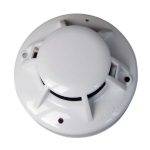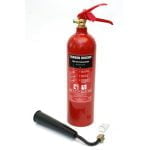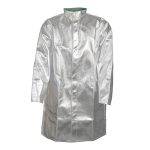Your list is empty, add products to the list to send a request
How to Test a Smoke Detector: A Complete Step-by-Step Guide

20
May
Smoke detectors are one of the most important safety devices in any home or business. These small, life-saving tools can provide critical early warnings in the event of a fire, giving you and your loved ones time to evacuate safely. But having a smoke detector isn’t enough—it needs to work properly. Regular testing is essential.
This guide walks you through exactly how to test a smoke detector, what tools you might need, how often you should do it, and what to do if it’s not working. Whether you own a First Alert model, a smart system, or something like the Apollo Addressable Optical Smoke Detector, this article has you covered.
Why Testing Your Smoke Detector Matters
Testing your smoke detector ensures it functions correctly and is capable of alerting you in a fire emergency. Neglecting this simple task can have tragic consequences. A non-working smoke detector won’t give you the time you need to react and escape.
According to the National Fire Protection Association (NFPA), three out of every five home fire deaths resulted from fires in homes with no smoke alarms or non-functioning smoke alarms. This makes routine testing critical.
How Often Should You Test a Smoke Detector?
You should test your smoke detector at least once a month. This ensures the batteries, sensors, and alarm function are all working. Additionally:
- Replace the batteries every six months
- Replace the entire smoke detector every 8–10 years
Understanding Different Types of Smoke Detectors
Before testing, it helps to understand what kind of smoke detector you have:
- Ionization Detectors: Detect fast-flaming fires quickly.
- Photoelectric Detectors: Respond better to slow-smoldering fires.
- Dual-Sensor Detectors: Combine both for comprehensive protection.
- Smart Detectors: Offer wireless alerts, diagnostics, and testing via apps.
Preparing to Test Your Smoke Detector
Before you begin testing:
- Notify everyone in your home.
- If your system is connected to a central monitoring service, inform them you are conducting a test to avoid false emergency dispatches.
- Have a chair or ladder handy if the detector is ceiling-mounted.
Method 1: Using the Built-In Test Button
This is the simplest and safest way to test your smoke alarm.
Steps:
- Locate the “Test” button on your smoke detector.
- Press and hold it for a few seconds.
- A loud alarm should sound. This indicates the unit is working.
- If no sound is heard, replace the batteries and try again.
- If it still doesn’t work, replace the entire smoke detector.
Method 2: Testing with Smoke (Simulated)
You can test your smoke detector using canned smoke, available at most hardware stores.
Steps:
- Hold the can about 2–3 feet from the detector.
- Spray a short burst toward the unit.
- Wait a few seconds to see if it triggers an alarm.
- If no alarm sounds, check the battery or replace the unit.
Caution: Never use real flames, matches, or lighters to test your smoke detector. This can damage the sensor or cause an actual fire.
Common Reasons Smoke Detectors Fail
Smoke detectors can fail due to:
- Dead or missing batteries
- Dust buildup in the sensors
- Age (most detectors last only 8–10 years)
- Wiring issues in hardwired units
- Improper installation (too close to kitchen or bathroom)
Signs It’s Time to Replace Your Smoke Detector
Consider replacing your smoke detector if:
- It’s more than 10 years old
- It chirps even after replacing the battery
- It gives frequent false alarms
- The test button doesn’t trigger a sound
Look for the manufacturing date on the back of the unit.
Maintenance Tips for Reliable Smoke Detectors
Follow these tips to keep your smoke detector in top shape:
- Clean it monthly using a vacuum with a soft brush attachment.
- Test monthly using the test button or canned smoke.
- Replace batteries every six months.
- Replace the unit every 8–10 years.
- Keep it free of dust and cobwebs.
What to Do if the Smoke Detector Doesn’t Work
If your detector fails to sound during a test:
- Replace the batteries
- Clean the unit to remove any obstructions
- Check power supply (for wired units)
- Replace the detector if it still doesn’t function
Best Smoke Detectors to Consider
Looking for a high-quality smoke detector?
Check: Apollo Addressable Optical Smoke Detector – White
A professional-grade detector ideal for commercial and residential use.
Where to Install Smoke Detectors
To ensure maximum safety, install smoke detectors:
- In every bedroom
- Outside each sleeping area
- On every level of the home, including the basement
- In stairways and near kitchens, but not too close to cooking appliances
Complying with Fire Codes and Regulations
Many local fire codes now require:
- Interconnected smoke detectors in new homes
- 10-year sealed battery units
- Specific placement near bedrooms and kitchens
Always check your local building codes and standards.
Final Thoughts: Be Proactive, Not Reactive
Testing your smoke detector is one of the simplest yet most powerful steps you can take for home safety. Make it a part of your monthly routine.
Don’t wait until a fire to find out your detector doesn’t work. Test it, maintain it, and upgrade when needed.
Ready to Upgrade Your Smoke Detector?
Discover the Apollo Addressable Optical Smoke Detector—a reliable, advanced solution for your fire safety needs.
Firesupplies
FAQs
1. How to test if your smoke detector is working?
Press the test button until the alarm sounds. For further testing, use canned smoke and see if the unit responds.
2. How to know if a smoke detector is good?
Check its response during a test, look at the manufacturing date (should be less than 10 years old), and ensure it’s free from damage or corrosion.
3. What is the best time of day to test a smoke detector?
The best time is during daylight hours when everyone is awake and can respond appropriately to the alarm. Avoid testing at night to prevent unnecessary panic or disturbance.



























